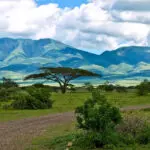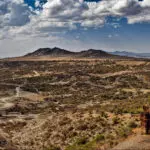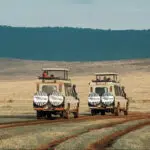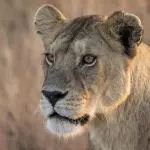Tripadvisor just released its Travelers Choice list of Best National Parks in the World, and Serengeti National Park tops the list at number one. A celebration of the views, lakes, trees, trails, beaches, and mountains that got travelers outside and into nature, Serengeti edged out other famous parks, such as USA’s Grand Teton, Costa Rica’s Arenal, Chile’s Torres Del Paine and New Zealand’s Fiordland.
Two other Tanzanian parks also made the list: Kilimanjaro National Park and Tarangire National Park, which came in at 12th and 14th, respectively.
The Serengeti ecosystem has always been a huge tourist draw for its Wildebeest Migration – dubbed the greatest show on earth – and its diverse wildlife that changes dramatically with the presence or absence of the migration. But did you know the Serengeti ecosystem has much more to offer beyond the migration? Here are a few other reasons why the Serengeti should not be missed. (And while you are with us, please be sure to explore our full selection of Safari Tours in Tanzania and Kilimanjaro Hiking Trips.
The Serengeti’s Unique Landscape
The park is characterized by its hills, valleys, and rivers. One of its most unique features is the plains, which are dotted with several gneiss and granite outcroppings known as kopjes (pronounced ‘copies’). These are large boulders of sparkling, coarse granite rock, often referred to as islands in a sea of grass. A well-known example of this is ‘Pride Rock’ from Disney’s The Lion King, which realistically represents the kopjes of the Serengeti. These rocky formations provide a refuge for various plants and animals; it’s common to see lion prides resting on their flat tops. The weathered, cracked, and rounded surfaces of the kopjes are home to a variety of insects, birds, lizards (such as the colorful agama lizard), and mammals (including rock hyraxes).
Bird Species You Can See in the Serengeti
Serengeti is a bird paradise, one of Africa’s endemic bird areas, with more than 500 bird species recorded. It hosts three endemic species found only in Tanzania – Fischer’s lovebird, Grey Breasted Spurfowl, and Rufous Tailed Weaver. It is also host to migratory birds from Europe and Northern Africa. Serengeti offers good bird watching year-round, but the highlight is the period from November through April, when migratory birds are present and resident birds are nesting, making it easy to spot the birds in their breeding plumage.
If you’re crazy about animals, our Taste of Wildlife Tour in Tanzania is the perfect choice for your next adventure.
Vegetation
The park can be divided into two vegetation regions, defined by dominant vegetation: woodland and grassland. The grasslands include the southern, nutrient-rich plains fed by the volcanic dust blowing from the Ngorongoro Highlands. The woodlands are grassy areas dotted with Acacia and Terminalia trees that spread from central Serengeti into the western region and up into the northern area of the park.
The Serengeti’s Unmatched Wildlife
Some of the best wildlife viewing in all of Africa is found here. All major animals can be spotted in Serengeti, from the popular Big Five – Lion, Leopard, Black Rhino, Buffalo, Elephant – to so many other unique creatures such as Nile Crocodile, Topi, Bat-eared Fox, Cheetahs, Hippos, Giraffe, Serval Cats and many more, including 100 varieties of the dung beetle, which can be surprisingly fun to watch! We host custom safaris year-round through this stunning, award-winning park. Start planning an adventure with us by looking through some of our Sample Safari Tour Itineraries and contacting our Travel Experts.






